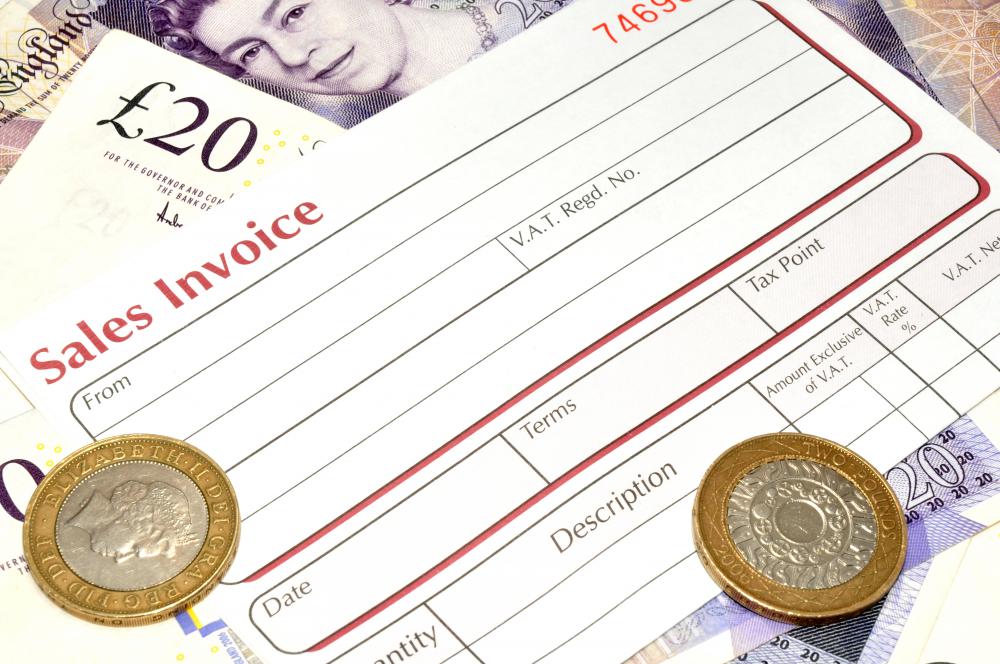At WiseGEEK, we're committed to delivering accurate, trustworthy information. Our expert-authored content is rigorously fact-checked and sourced from credible authorities. Discover how we uphold the highest standards in providing you with reliable knowledge.
What is a VAT Tax?
The value added tax, sometimes simply known as a VAT or a goods and services tax, is a form of consumption tax that is often imposed on most consumer products. A tax of this type is considered an indirect tax, in that the collection of the tax occurs not with a single entity, but at various points throughout the production and distribution process. The tax rate depends on how much a product's value increases during each state of the production process. While each consumer that purchases a product during the production and distribution processes are required to pay a value added tax on the product, all taxpayers, except the final consumer, may possibly be refunded for the VAT. In this way, only the consumer who buys the product last, and does not sell it to someone else, pays the VAT tax without the possibility of a refund.
Common Characteristics

Understanding how a VAT tax works involves recognizing that any product will pass through a number of stages or phases during the manufacturing process, as well as during the course of distribution. Taxation occurs at each of these stages, based on the theory that there is some value added to the product as it moves through the process. Any taxes already assessed and paid are deducted from the assigned value, which creates a cascading effect as the product continues to move through the production process. Ultimately, the final residue of the VAT tax is paid by the consumer who purchases and uses the final good or service.
Essentially, in addition to taxes paid when purchasing goods, under a VAT system, any added value that the original buyer gains by later selling the product is also taxed when the product is sold. For example, if a producer buys yarn from a manufacturer and turns it into sweaters, it has added value to that product. The producer, in turn, sells the sweaters to a retailer. The original manufacturer must pay VAT tax when selling the yarn to the producer, a percentage of the difference between what it bought the raw materials for and the price at which it sold the yarn.
When the producer sells the sweaters, it pays VAT on the difference between the price it bought the yarn for and what it sold the finished goods at, but is typically credited for the tax already paid by the manufacturer. When the retailer sells the goods, it is credited the taxes paid by both the manufacturer and the producer from the VAT it owes. All of these taxes are usually passed on to the consumer in the final price.
A VAT system is a common part of the tax structures of many nations, particularly in Europe. With taxes assessed at each phase of the production process, it is important for every supplier involved in the process to properly calculate and pay the value added tax. For example, a company that produces fruit juice would pay a VAT, but their rate may be lessened by the amount of taxes paid by the farm that produced the raw fruit. As a result, no one entity ultimately pays all of the taxes associated with the production cycle; rather, the end consumer pays the biggest portion of the tax as the previous taxpayers are most likely eligible for a refund.
Pros and Cons
Some have questioned the impact of the value added tax scheme on the general economy. While there is no doubt that the process generates revenue that can be put to good use by governments, there is some concern that the imposition of the tax at each stage of production creates a burden on suppliers and manufacturers that may ultimately minimize their ability to expand operations, hire additional employees, and contribute directly to the health of the economy. Supporters of the tax note that the cascading effect of the tax structure does just the opposite by making it possible to share the tax burden with everyone involved in the production process, and not just the entity that owns and sells the final product.
AS FEATURED ON:
AS FEATURED ON:











Discussion Comments
The VAT tax is *not* a consumption tax. It is a tax on production.
An end point sales tax is a tax on consumption. It is the best possible tax to have in an economy.
A VAT tax is distorting and quite harmful to an economy. Never tax production if you want prosperity for everyone.
Post your comments